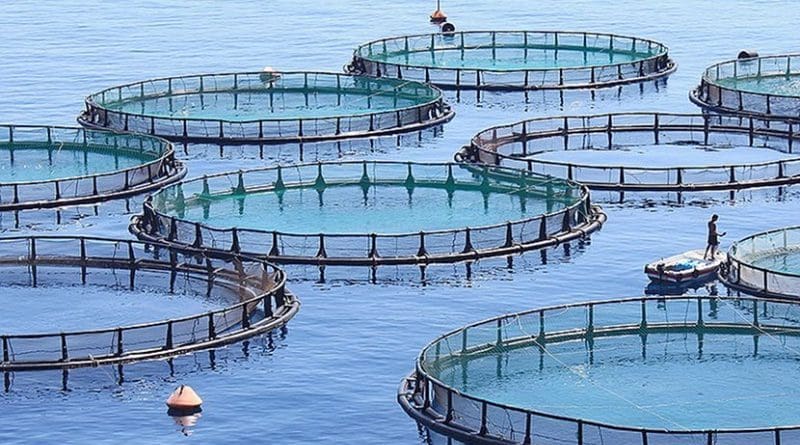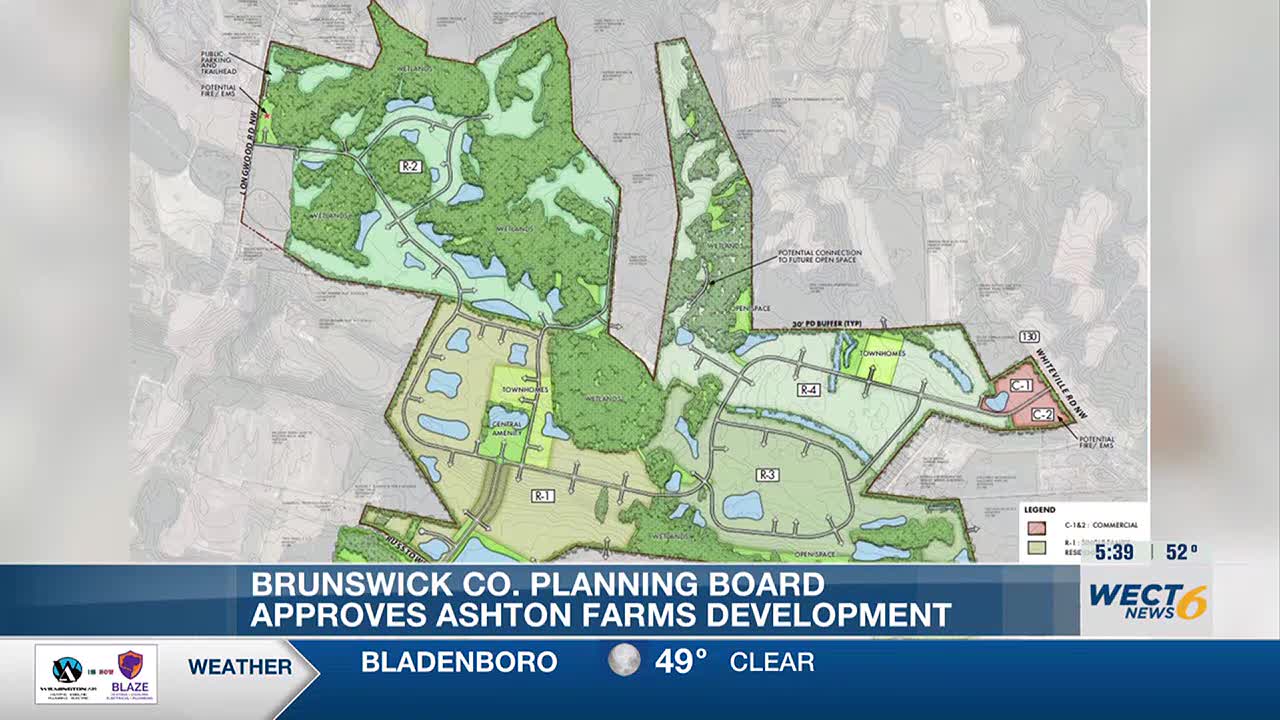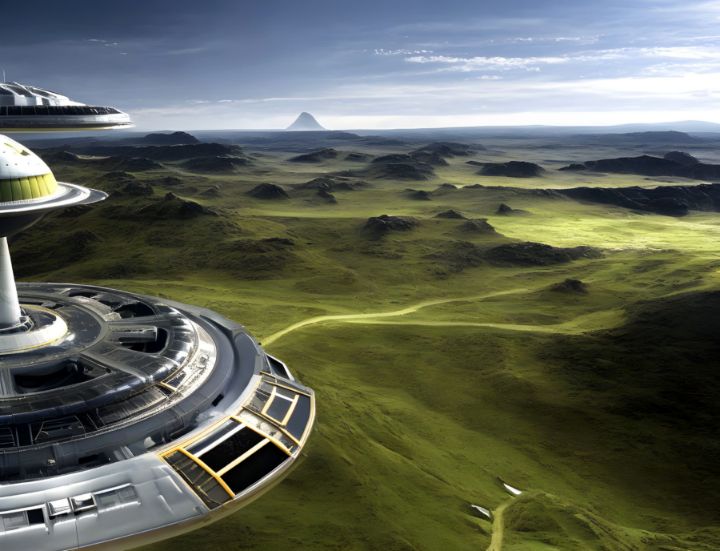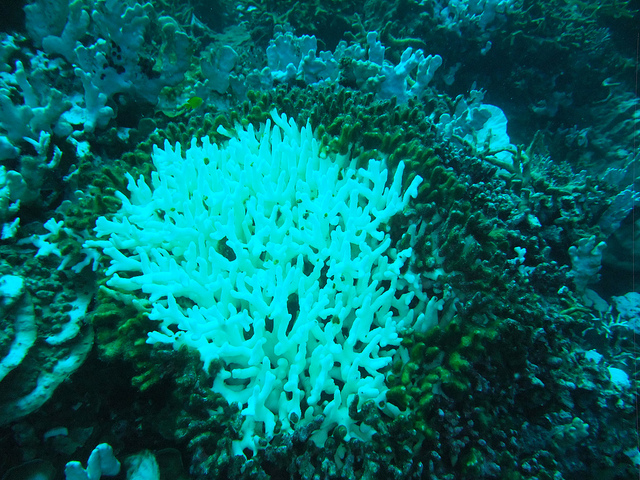Report on Climate Change Impacts on Maryland’s Eastern Shore: A Sustainable Development Goals Perspective
Introduction: Climate Vulnerability and Data Basis
This report analyzes the diverse impacts of climate change across Maryland’s Eastern Shore, utilizing data from the fifth National Climate Assessment. The region’s low-lying geography makes it exceptionally vulnerable to climate-related phenomena, including sea-level rise and saltwater intrusion. These environmental pressures present significant challenges to the achievement of multiple Sustainable Development Goals (SDGs).
Impact on Terrestrial Ecosystems and Food Security
SDG 15 (Life on Land): Degradation of Forest Ecosystems
The encroachment of seawater into terrestrial environments is causing irreversible damage to forest ecosystems, a direct challenge to SDG 15.
- Ghost Forests: A primary consequence is the formation of “ghost forests,” where trees are killed by saltwater intrusion. This occurs when rising sea levels and high tides push saline water inland, burning trees from within.
- Scale of Damage: Over 70,000 acres of forest on the lower Eastern Shore are classified as ghost forests.
- Severity: State classifications indicate that 90% of these affected acres are severely or very severely impacted, meaning at least half of the trees are dead.
- Ecosystem Transition: Land affected by saltwater intrusion is progressively transitioning into marshland or, in worst-case scenarios, open water, representing a total loss of the original forest ecosystem.
SDG 2 (Zero Hunger): Threats to Agricultural Productivity
Saltwater intrusion poses a direct threat to regional food systems and agricultural viability, undermining the objectives of SDG 2.
- Crop Failure: Key crops for the region, such as corn and soybeans primarily used for livestock feed, do not tolerate saline soil, leading to a loss of land productivity.
- Economic Loss for Farmers: Farmers are experiencing significant economic impacts from the loss of arable land, with limited viable alternative crops for the saline conditions.
- Food System Disruption: The decline in local crop production has cascading effects on the broader agricultural supply chain, particularly livestock feed.
Socio-Economic and Cultural Ramifications
SDG 10 (Reduced Inequalities) & SDG 11 (Sustainable Cities and Communities): Disproportionate Impacts and Heritage Loss
Climate change impacts are not evenly distributed, exacerbating existing vulnerabilities and threatening cultural heritage, which conflicts with the principles of SDG 10 and SDG 11.
- Vulnerable Communities: Black communities on the lower Eastern Shore are disproportionately affected by land loss due to saltwater intrusion, compounding historical and economic disadvantages.
- Loss of Historical Land: A significant amount of farmland and communities historically owned by Black families has already been lost to rising waters.
- Cultural Heritage at Risk: Critical historical sites are becoming inaccessible. The recently discovered foundation of Harriet Tubman’s birth home in the Blackwater National Wildlife Refuge is now unreachable as it is located within a ghost forest.
Impact on Marine Environments and Livelihoods
SDG 14 (Life Below Water): Chesapeake Bay Ecosystem Under Stress
The health of the Chesapeake Bay, a critical marine ecosystem, is being severely compromised by climate change, directly impacting SDG 14.
- Sea-Level Rise: The Chesapeake Bay region is the third-most vulnerable area in the U.S. to sea-level rise, which has already increased by 1.3 to 1.5 inches per decade over the last century.
- Water Temperature and Quality: Rising water temperatures are projected to increase the frequency of fish kills.
- Ocean Acidification: Increased atmospheric carbon dioxide contributes to ocean acidification, which threatens the viability of key species like oysters by impeding shell formation.
SDG 8 (Decent Work and Economic Growth): The Changing Fishing Industry
The region’s fishing industry, a cornerstone of the local economy, faces an uncertain future, affecting progress toward SDG 8.
- Shifting Species: Warmer waters are altering marine habitats, leading to changes in species distribution. A shrimp industry has emerged in Maryland only in recent years, while blue crab populations may thrive in warmer conditions.
- Threats to Key Fisheries: The decline of oyster populations due to acidification poses a significant economic threat to a vital component of the local fishing industry.
- Economic Vulnerability: The overall instability of marine ecosystems creates economic uncertainty for the thousands of individuals whose livelihoods depend on the Chesapeake Bay.
SDG 13 (Climate Action) & SDG 17 (Partnerships for the Goals): Adaptation and State Response
Addressing the Challenge
In response to these challenges, adaptation strategies are being developed, reflecting the goals of SDG 13 and SDG 17.
- Managed Transition: The state has initiated a pilot program to assist farmers in transitioning agricultural land affected by saltwater intrusion into wetlands.
- Future Scenarios: The best-case outcome for much of this land is a successful transition to functional marshland; however, a complete loss to open water remains a significant risk.
- Need for Collaboration: Addressing these multifaceted challenges requires continued partnership between government agencies, research institutions like the University of Maryland, and local communities to build climate resilience.
Analysis of SDGs in the Article
1. Which SDGs are addressed or connected to the issues highlighted in the article?
-
SDG 13: Climate Action
The entire article is framed around the impacts of climate change in Maryland, as detailed in the fifth National Climate Assessment. It discusses rising temperatures, sea-level rise, and the resulting phenomena like saltwater intrusion, directly linking these local issues to the broader global challenge of climate change.
-
SDG 15: Life on Land
The article extensively covers the degradation of terrestrial ecosystems. The primary example is the creation of “ghost forests” on the Eastern Shore, where saltwater intrusion is killing vast areas of forestland. This directly relates to the protection, restoration, and sustainable use of terrestrial ecosystems.
-
SDG 14: Life Below Water
The impacts on the Chesapeake Bay and its marine life are a key focus. The article mentions sea-level rise affecting the bay, changes in fish populations (blue crabs, shrimp), and the depletion of oyster populations due to increased ocean acidity, all of which fall under the goal of conserving and sustainably using marine resources.
-
SDG 2: Zero Hunger
The threat to agriculture is explicitly mentioned. Saltwater intrusion is causing a “loss of productivity” on farmland, particularly affecting crops like corn and soybeans. This connects to the goal of ending hunger, achieving food security, and promoting sustainable agriculture.
-
SDG 10: Reduced Inequalities
The article highlights that climate change impacts are not evenly distributed. It states that “Black communities in the lower Eastern Shore are being disproportionately impacted by saltwater intrusion” and mentions the historical loss of Black farms and communities, which relates to reducing inequality within and among countries.
-
SDG 11: Sustainable Cities and Communities
This goal is relevant through its focus on protecting cultural and natural heritage. The article notes that the historical site of Harriett Tubman’s birth home is now inaccessible due to the formation of a ghost forest, representing a loss of significant cultural heritage.
2. What specific targets under those SDGs can be identified based on the article’s content?
-
Target 13.1: Strengthen resilience and adaptive capacity to climate-related hazards and natural disasters in all countries.
The article describes Maryland’s vulnerability to climate-related hazards like sea-level rise and saltwater intrusion (“invisible floods”), demonstrating the challenges in building resilience in the Chesapeake Bay region, which is cited as the “third-most vulnerable area to sea level rise” in the U.S.
-
Target 15.1: By 2020, ensure the conservation, restoration and sustainable use of terrestrial and inland freshwater ecosystems and their services, in particular forests…
The article’s description of over 70,000 acres of “ghost forests” where at least half the trees are dead shows a direct failure to conserve forest ecosystems on the Eastern Shore.
-
Target 15.3: By 2030, combat desertification, restore degraded land and soil…
The process of saltwater intrusion turning productive farmland and forests into salty, unusable soil or open water is a form of land degradation that this target aims to combat.
-
Target 14.2: By 2020, sustainably manage and protect marine and coastal ecosystems to avoid significant adverse impacts…
The article details how the Chesapeake Bay ecosystem is being altered by warmer waters and rising sea levels, leading to changes in species composition and the potential loss of ecosystems as land transitions to open water.
-
Target 14.3: Minimize and address the impacts of ocean acidification…
This is directly addressed by the statement that “an increase in carbon dioxide in the atmosphere increases the acidity in the ocean water, which can deplete oyster populations.”
-
Target 2.4: By 2030, ensure sustainable food production systems and implement resilient agricultural practices that increase productivity and production…
The article highlights the threat to this target by describing how saltwater intrusion leads to a “loss of productivity” for farms growing corn and soybeans, which are not resilient to salty soil.
-
Target 11.4: Strengthen efforts to protect and safeguard the world’s cultural and natural heritage.
The fact that Harriett Tubman’s birth home, a significant cultural and historical site, “now can’t even get there because it’s in the middle of a ghost forest” is a clear example of a failure to safeguard cultural heritage from environmental threats.
-
Target 10.2: By 2030, empower and promote the social, economic and political inclusion of all…
The article points to a lack of inclusion and protection for specific groups by stating that “Black communities in the lower Eastern Shore are being disproportionately impacted” and that a “whole history that’s already gone underwater” belonged to these communities.
3. Are there any indicators mentioned or implied in the article that can be used to measure progress towards the identified targets?
Yes, the article provides several quantitative and qualitative indicators:
- Indicator for Target 15.1 (Forest Degradation): The article quantifies the extent of forest loss by stating there are “over 70,000 acres of forest classified by the state as ghost forests.” It further specifies that “90% of those acres classified as severely or very severely impacted,” where “at least half of its trees would be dead.”
- Indicator for Target 13.1 (Sea-Level Rise): A specific rate of sea-level rise is provided: “The Chesapeake Bay has already risen from 1.3 to 1.5 inches each decade over the past 100 years.”
- Indicator for Target 14.3 (Ocean Acidification): The depletion of oyster populations due to increased water acidity is mentioned as a direct consequence, serving as a biological indicator of this chemical change.
- Indicator for Target 14.2 (Ecosystem Health): Changes in species composition, such as the emergence of a shrimp industry and the thriving of blue crabs, serve as indicators of how the marine ecosystem is responding to climate change.
- Indicator for Target 2.4 (Agricultural Productivity): The “loss of productivity” of farmland due to salty soil is a qualitative indicator of the decline in sustainable agricultural practices in the affected areas.
- Indicator for Target 11.4 (Heritage Protection): The physical inaccessibility of the Harriett Tubman birth home site serves as a clear, albeit qualitative, indicator of the failure to protect a significant cultural heritage site.
4. Table of SDGs, Targets, and Indicators
| SDGs | Targets | Indicators Identified in the Article |
|---|---|---|
| SDG 15: Life on Land | 15.1: Ensure conservation and restoration of terrestrial ecosystems. 15.3: Combat desertification and restore degraded land. |
– Over 70,000 acres of ghost forests. – 90% of ghost forest acres are severely or very severely impacted (at least half of trees are dead). |
| SDG 13: Climate Action | 13.1: Strengthen resilience and adaptive capacity to climate-related hazards. | – Sea-level rise of 1.3 to 1.5 inches per decade in the Chesapeake Bay. – Region is the 3rd most vulnerable in the U.S. to sea-level rise. |
| SDG 14: Life Below Water | 14.2: Sustainably manage and protect marine and coastal ecosystems. 14.3: Minimize and address the impacts of ocean acidification. |
– Depletion of oyster populations due to increased water acidity. – Emergence of a new shrimp industry and thriving blue crab populations due to warmer waters. |
| SDG 2: Zero Hunger | 2.4: Ensure sustainable food production systems and resilient agricultural practices. | – “Loss of productivity” of farmland growing corn and soybeans due to salty soil. |
| SDG 11: Sustainable Cities and Communities | 11.4: Strengthen efforts to protect and safeguard the world’s cultural and natural heritage. | – Inaccessibility of the Harriett Tubman birth home, a significant cultural heritage site. |
| SDG 10: Reduced Inequalities | 10.2: Empower and promote the social and economic inclusion of all. | – Black communities are “disproportionately impacted” by saltwater intrusion. – Loss of historical Black farms and communities to rising waters. |
Source: delmarvanow.com







